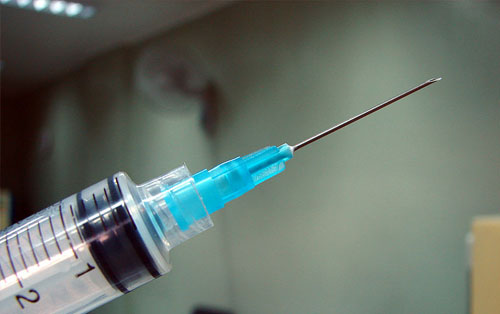Next-generation sequencing technology opens new path for biopharmaceuticals
Next-generation sequencing technologies are now increasingly used in the development of emerging biopharmaceuticals and vaccine production. Various high-throughput technologies currently used by the drug discovery department, such as gene chip, metabolomics modeling, yeast double hybridization, proteomics, high-throughput chemical screening, and electronic hybridization, are expected to be replaced or replaced by next-generation sequencing technologies. supplement.

With the increasing number of microbial genome information, next-generation sequencing technology is widely used in the research and development of antibacterial and antiviral drugs, especially in tracking its resistance mutations. However, most of these studies are currently from academic institutions and rarely come from pharmaceutical companies. Bacteria and viruses often develop resistance to existing drugs, and understanding microbial resistance mutations through next-generation sequencing technologies is particularly important for future anti-infectious drug development.
The use of next-generation sequencing technology in the quality control of vaccines allows early detection of exogenous virus contamination in the production process. In the future, next-generation sequencing technologies will be used to monitor the entire process of vaccine use, assessing its safety, efficiency, and differences in response in different hosts.
Next-generation sequencing is beginning to be used in biopharmaceutical applications, especially in the field of antibody library construction. The combination of next-generation sequencing and real-time PCR technology is faster and less expensive than traditional phage antibody library technology, and the subsequent analysis of antibody library diversification is more accurate. In addition, through the combination of next-generation sequencing and phage cDNA library technology, new interaction proteins of a multi-functional enzyme, or new binding domains of known interacting proteins, can be identified. Compared with traditional methods such as enzyme-linked immunosorbent assay and one generation of sequencing, the information is faster and more informative.
At present, the application of next-generation sequencing technology in drug development is still in its infancy, and it also faces the problems of data storage, interpretation and standardization. The emergence of next-generation sequencing technology is a milestone for drug development, and the existing applications run through all stages of early development to clinical trials. With the reduction of future sequencing costs, the enhancement of big data analysis capabilities, the continuous development of genetic diagnosis and individualized treatment, more and more new drugs with higher efficiency, fewer side effects and more specificity will emerge.
The personal DNA information consulting industry that has emerged in recent years is actually a market-oriented product of genetic testing. The basic model is to use the Internet and express delivery to send the test kit to the user, and then the collected saliva is sent in time. Go back to the company and extract the user's DNA from it. The test results can also be obtained directly from the online query.
At present, most of these companies can only detect known target genes, calculate the percentage based on a large number of statistical results, and have little biological significance and clinical significance, but with the deepening of the relationship between genes and human disease health, With the popularity of whole genome sequencing, individual genetic information will be more and more instructive for clinical individualized treatment.
One of the changes in modern medical concepts is the transition from “treatment†to “preventionâ€. One of the effective means to achieve this goal is to establish an individual genetic health record and a major disease early warning mechanism. To achieve the purpose of early prevention, we must fully understand the relationship between genes and human disease health, which also depends on the continuous accumulation of clinical databases, and fully explore through the interpretation of biological information.
Regulatory norms and basic bioinformatics are still the main bottlenecks that currently restrict the application of next-generation sequencing technologies. The issue of supervision and standardization is expected to be solved with the gradual improvement of pilot approval and related registration regulations. The relatively mature technology of reproductive health will resume development and return to the track of rapid growth.
The development of bioinformatics, the relatively long process of research on human health and genetic relationships, depends on the application of new technologies such as big data, but breakthroughs in each disease or every genetic research will open up a new market. space. When a large amount of bioinformatics big data is interpreted, the gene sequencing market will be combined with disease prevention to open a new era of technology.
The huge market prospects have attracted a lot of capital to enter, and the second-generation sequencing companies have sprung up. Before the suspension of genetic testing, prenatal non-invasive screening was mainly divided by Huada Gene and Berry and Kang. After the CFDA opened its application in March 2014, the number of declared enterprises was large, and there were opportunities for redistribution in the market.
This is a cute design of paper soap. Thin as paper,light weight,packed in a small case,easy carrying.
One wash only use one piece,no polution to others.
ANTI VIRUS PAPER SOAP
THIN SOAP,TRAVEL SOAP,HOTEL SOAP,TOILET SOAP
MIANYANG BIGANT TECHNOLOGY CO LTD , https://www.bigantech.com